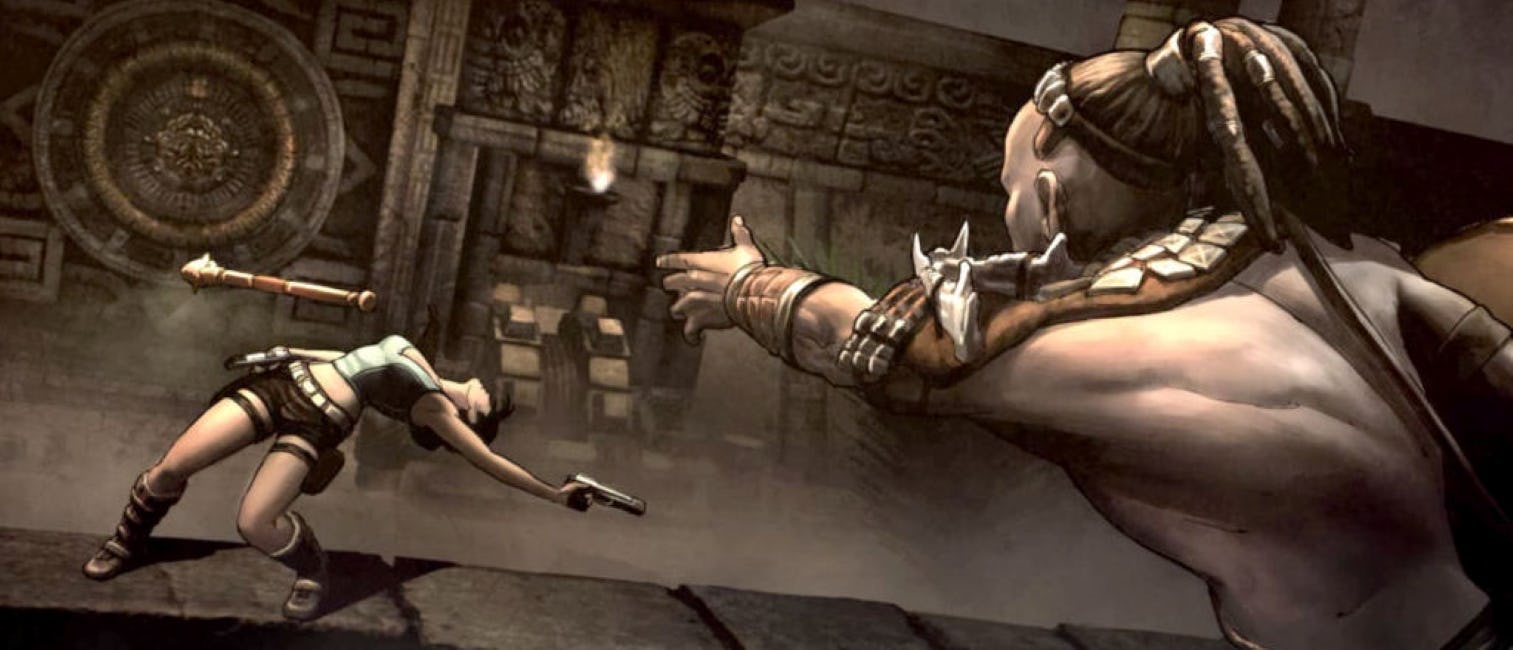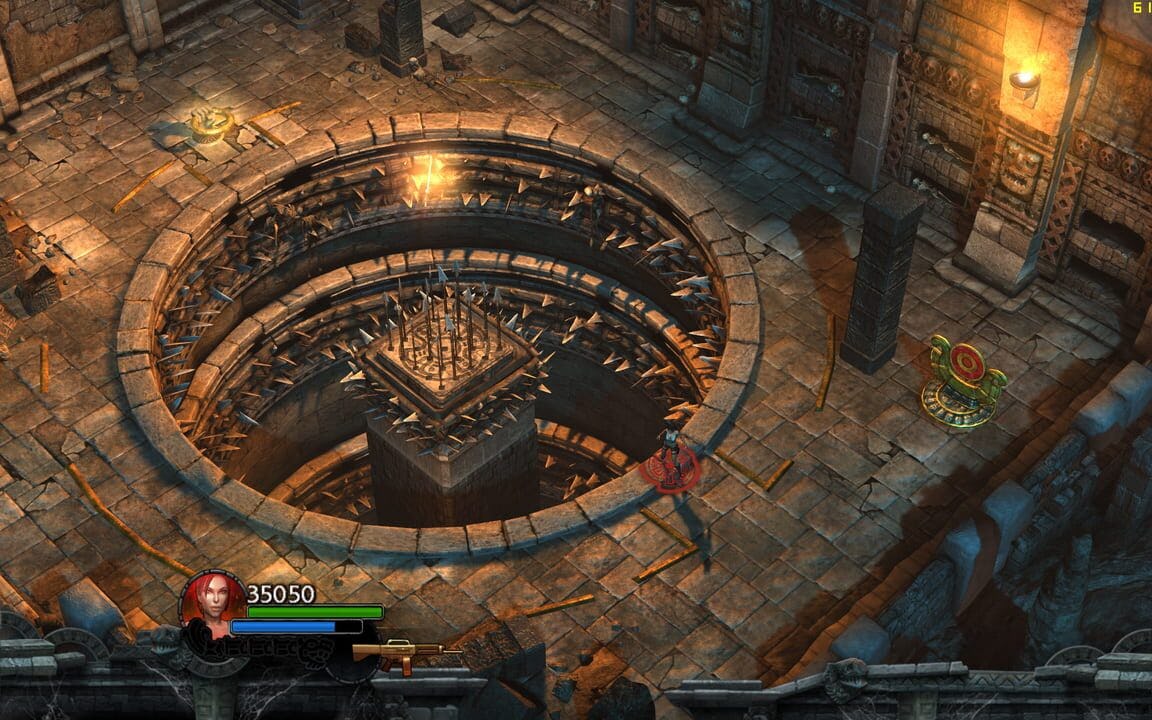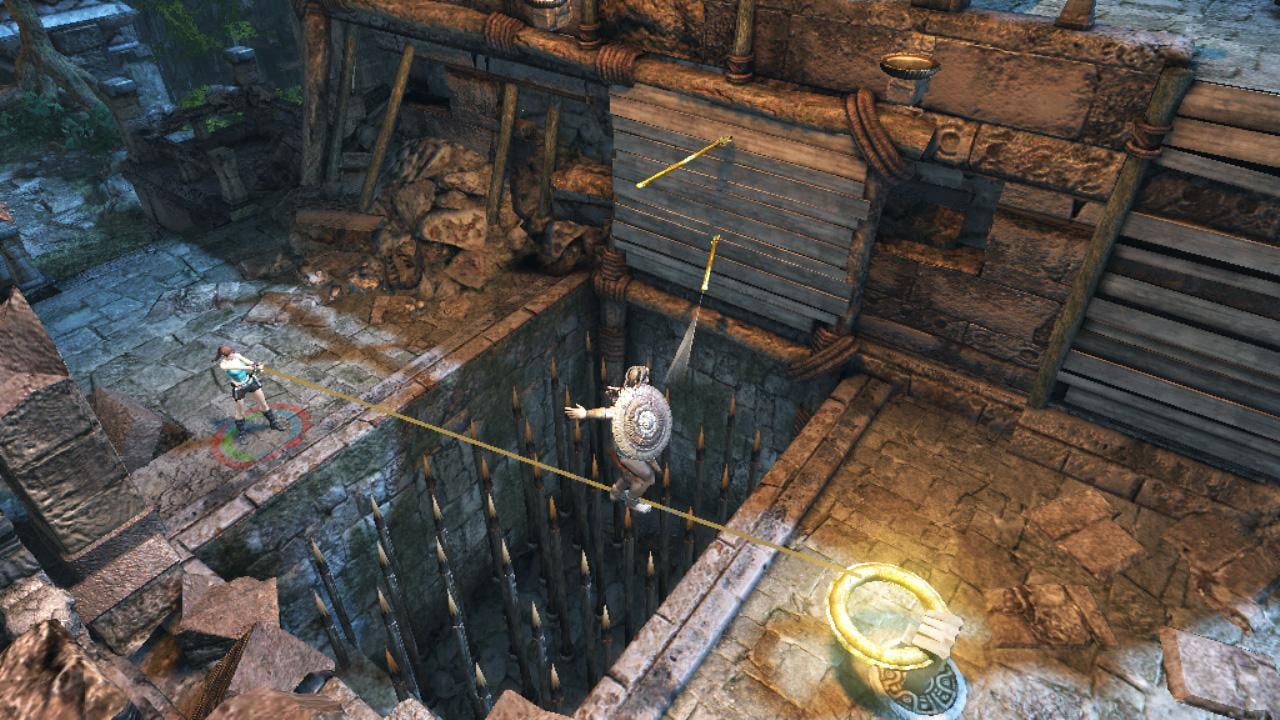
Perspective is 9/10ths of reality. The way we see things, whether we’re talking about 3D games or simply our opinions and ideas, shapes our understanding. For this reason, perspectives can be resistant to change. They inform so much, and once you’re locked in, it requires a lot of effort or creativity (or both) to break into something new. It’s risky, but sometimes it's worth it. Back in 2010, one of gaming’s most stagnant franchises found a new perspective and a new understanding of what made its games great in the first place.
Released in 2010, Lara Croft and the Guardian of Light wasn’t marketed as a tentpole entry in the franchise. Instead, it was a smaller downloadable title, the kind of game that might have felt like a curious side project. But what Crystal Dynamics delivered was more than a footnote. It was a clever reinvention of Lara Croft that leaned into arcade-style action, puzzle-solving, and cooperative play.
When most people think of Tomb Raider, they think of sprawling, cinematic adventures. Jungles full of ancient ruins, puzzles hidden in cavernous temples, and of course, Lara Croft diving headfirst into danger with a pair of pistols at her side. That’s the Lara Croft brand.
The first thing that sets Guardian of Light apart from the mainline Tomb Raider series is perspective. Literally. Instead of the traditional third-person, over-the-shoulder camera, the game is presented from an isometric viewpoint. At first glance, it almost looks like a twin-stick shooter. You control Lara from above, moving her across sprawling temple arenas while blasting enemies, dodging traps, and solving environmental puzzles.
This shift in perspective gave the developers license to play with new mechanics that wouldn’t fit in a traditional Tomb Raider framework. Combat is faster and arcade-flavored, encouraging you to fire in all directions while keeping on the move. Puzzles often take advantage of the bird’s-eye view, with pressure plates, rolling spheres, and timed mechanisms that challenge your ability to coordinate movement and strategy. It feels familiar in theme but fresh in execution, especially for a franchise often accused of repeating itself.

Where the mainline games have always leaned into exploration and cinematic storytelling, Guardian of Light thrives on tight mechanics and level design. The controls are snappy, with Lara able to unleash a barrage of gunfire, toss spears that double as climbing aids, and roll massive boulders into position for puzzle-solving. Every tool in her arsenal has both combat and environmental uses, which keeps gameplay varied.
For completionists, the game also introduced score challenges, collectibles, and optional objectives for each level. These design choices made it feel almost like a modern arcade game, rewarding quick thinking and mastery of the mechanics rather than just pushing players through a linear narrative.
But perhaps the crown jewel of Guardian of Light is its cooperative play. Lara is joined by Totec, a Mayan warrior resurrected to help stop the return of an evil spirit. While the game can be played solo (and it works surprisingly well that way, with Totec acting as an AI helper), the full experience shines brightest in co-op.
In two-player mode, puzzles and combat are built around cooperation. Totec can throw his shield for Lara to use as a stepping stone, while Lara’s grappling hook can create tightropes for Totec to cross. The game constantly nudges players to communicate and work together, turning each level into a blend of platforming, puzzling, and coordinated improvisation.

So why should you seek out a 15-year-old downloadable spinoff? The answer is simple: because Guardian of Light offers something the mainline games don’t. It’s not just a scaled-down Tomb Raider; it’s an entirely different lens on what Lara Croft can be. And perhaps most importantly, the game is still fun. The puzzles are clever, the co-op mechanics remain unique, and the bite-sized level design makes it easy to jump in for a quick session without committing to a sprawling 30-hour campaign. In an era where so many games demand endless time and attention, Guardian of Light is refreshingly concise without sacrificing depth.
Lara Croft and the Guardian of Light may have been a smaller experiment in the franchise, but it succeeded precisely because it dared to be different. It traded cinematic spectacle for mechanical precision, solitary adventuring for co-op camaraderie, and traditional camera angles for an isometric playground. Fifteen years later, it stands as one of Lara’s most entertaining outings, and one of her most overlooked.
Lara Croft and the Guardian of Light is available on Xbox Game Pass. It’s also for sale on Steam, Xbox, iOS, and Android.







